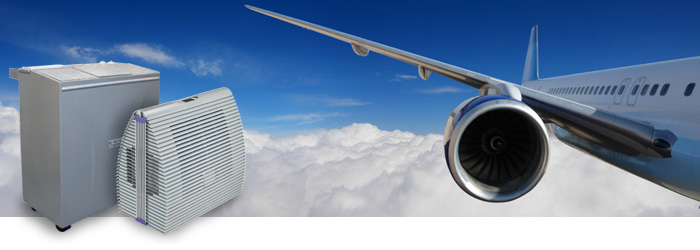 When was the last time you boarded a plane? Do you recall experiencing any uncomfortable side effects during or after a long-distance flight? No, nothing dramatic like a sudden bout of amnesia and being blissfully unaware of who you are. Or a panic attack because you were strangely unable to peel off your graduated compression stockings. No, something less disturbing and something more familiar like a sore throat perhaps, a stuffy nose, dry, irritated, eyes and itchy skin or raw, red knuckles and chapped lips and hands?
When was the last time you boarded a plane? Do you recall experiencing any uncomfortable side effects during or after a long-distance flight? No, nothing dramatic like a sudden bout of amnesia and being blissfully unaware of who you are. Or a panic attack because you were strangely unable to peel off your graduated compression stockings. No, something less disturbing and something more familiar like a sore throat perhaps, a stuffy nose, dry, irritated, eyes and itchy skin or raw, red knuckles and chapped lips and hands?
If you have been a passenger on a transcontinental flight and you have experienced one, or two – or if you have been especially unlucky even all six of these symptoms – then the chances are that you were suffering from the effects caused by low levels of humidity in the cabin of the aircraft that you were flying with.
The reason why humidity levels on planes are often very low is due to the fact that the fresh air that replaces the stale air on board the aircraft comes from the surrounding atmosphere – which at a height of at least 20,000 feet means that the air on the outside is extremely cold – about 2.5° Celsius colder for every thousand feet above mean sea level – and also extremely dry.
As a result, people who wear contact lenses, for example, often end up reaching their destination looking all the worse for wear with acutely stinging or watering, swollen eyes. This is why globetrotting businessmen or old hands at long-haul flying like to make sure that they are always kitted out with an adequate supply of eye drops, moisture cream and nose sprays that would probably last them a trip around the equator – and back.
Yet you would be wrong to think that the problems described above are only restricted to passengers criss-crossing the skies at high altitudes above our heads. Such dry climates often exist much closer to home than many would care to think – in houses and offices up and down the country where extremely efficient central heating systems provide the room’s occupants with the warmth they crave but also with dry air that dries out and irritates their mucous membranes making you significantly more susceptible to viruses and bacteria and colds and flu.
One old-fashioned household tip which used to be very popular among parents eager to raise the moisture content in their dry rooms involved placing a bowl or saucer of water on a window sill or hanging a daintily-painted vessel or a hollow ceramic animal, mostly some sort of feline, filled with water on the radiator. Not only did this method prove far from effective, it also posed a real threat to the health of those in the room if the water was not changed regularly, because germs could easily multiply and thrive, which in effect only ended up making matters worse.
The answer that modern-day families have when dealing with such a problem is as simple as it is effective: a humidifier. Not only do humidifiers reliably monitor and control the climate in your home and increase humidity levels where the air is too dry and more moisture is needed, they also improve the quality of the air that you breathe, because they clean it and restrain airborne particles like dust and pet dander in the built-in air filter.
So wherever you are – high up in the sky or down on the ground – make sure that you always have the means at hand to stop you from having to suffer unnecessarily when the air is dry and relative humidity levels are low. A travelling bag full of bottles with pipettes and an arsenal of pump sprays and tubes – or a high quality, low cost humidifier that will make a difference to your life and the lives of your family too.

